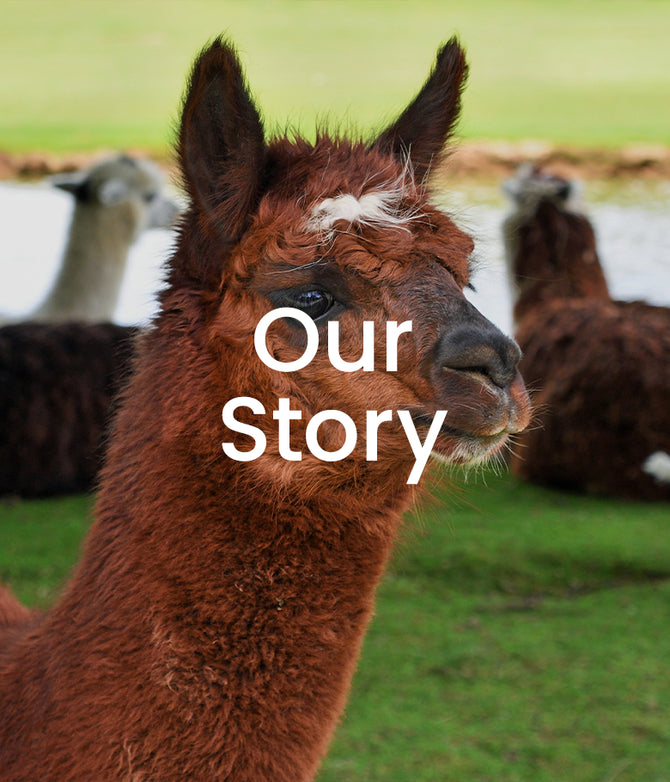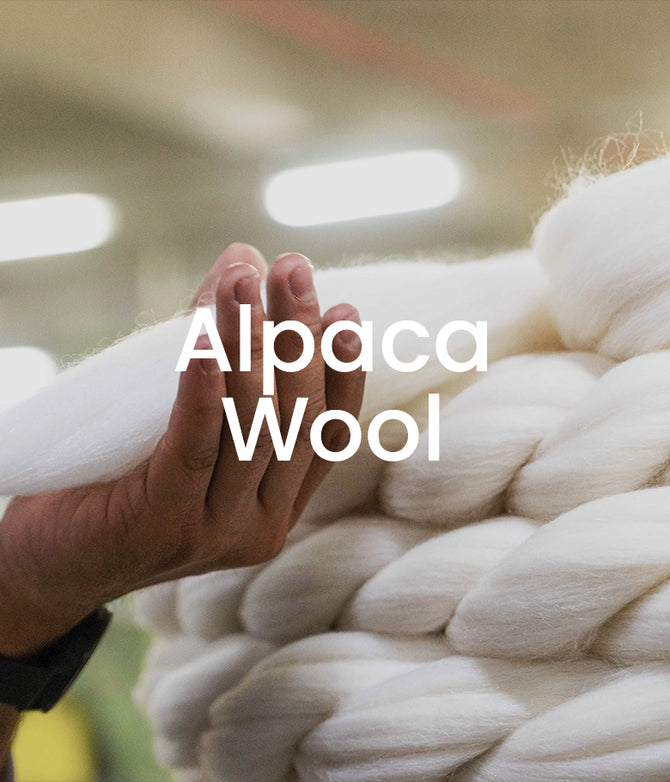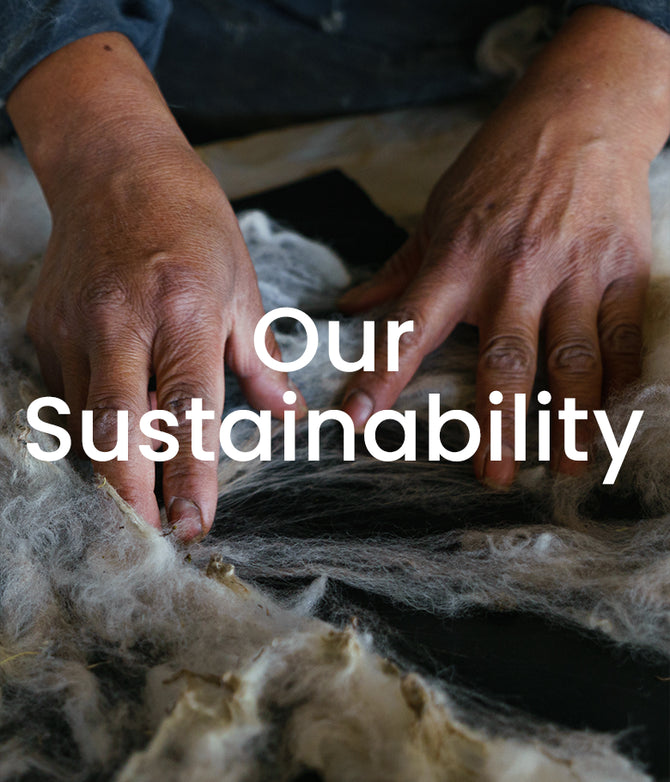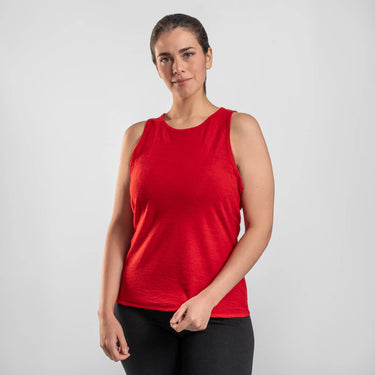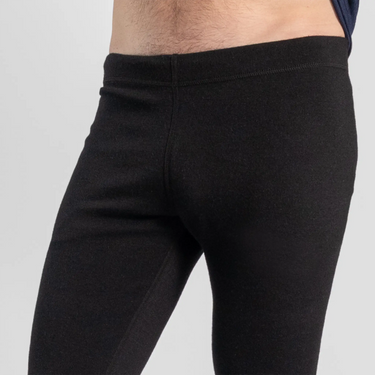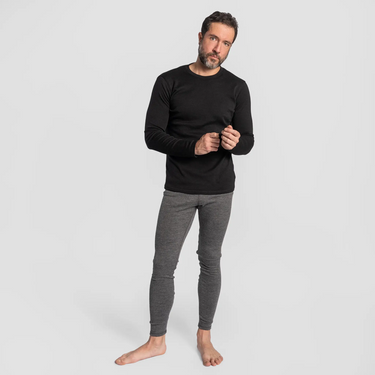How to Travel Sustainably in Cusco:
A Guide to Respecting the Andes and the Amazon
Published April 29, 2025
1. Say Goodbye to Single-Use Plastics
Single-use plastics are a huge environmental problem, but small tweaks in your daily habits can make a big difference:
- Bring reusable bags: Make or buy groceries and produce bags to use instead of plastic ones. Keep them by the door or in your car so you never forget them.
- Ditch bottled water: Invest in a reusable water bottle [1]. If tap water isn’t safe, boil or filter it instead.
- Carry a reusable coffee cup: Even “eco-friendly” disposable cups create waste if not disposed of properly.
- Pack a zero-waste kit: Include bamboo or metal cutlery, a reusable straw, and a container for takeout. It might take practice, but soon it’ll feel natural.
2. Use Less Water and Energy
Every drop counts, and every watt matters. Here are a few small changes to reduce your footprint:
- Shorten your showers: A quick shower saves both water and energy. Bonus: it’s better for your skin too! [2]
- Turn off the lights: Unplug appliances and switch off lights when you’re not using them [3].
- Hang clothes to dry: Whenever possible, skip the dryer and hang your clothes. It’s gentler on fabrics and the planet.
- Flush smarter: If your toilet has an eco-flush option, use it. No eco-flush? Place a filled bottle in the tank to reduce water per flush.
At Arms of Andes we make our gear from 100% Royal Alpaca Wool of 18-18.5 microns.
3. Make Eco-Conscious Food Choices
Food is one of the easiest ways to live more sustainably:
- Buy local and seasonal: This reduces transportation emissions and supports local farmers [4].
- Cook from scratch: Homemade meals usually come with less packaging and waste.
- Be mindful about meat: Choose ethically raised options, like free-range chicken or grass-fed beef, and support sustainable farming practices. Exploring plant-based meals occasionally can also make a difference [5].
- Opt for sustainable groceries: Shop at packaging-free or bulk stores. No access? Buy in bulk at your regular store to minimize waste.
4. Rethink Your Transportation Habits
How you get around affects your carbon footprint. Start small:
- Walk or bike more: Even once a week can make a difference.
- Use public transport: Replace car trips with bus or train rides when possible [9].
- Carpool: Sharing rides with colleagues or friends reduces emissions.
- Fly less: For shorter trips, consider buses or trains. Offset your carbon emissions for long flights.
5. Choose Sustainable Fashion
The fashion industry is one of the largest polluters, but your wardrobe can make a difference:
- Avoid fast fashion: Look for quality over quantity. Cheaper often means corners were cut in ethics and sustainability.
- Buy second hand: Thrift stores and online resale platforms are great for finding unique, affordable items.
- Support eco-conscious brands: Do your research and choose brands that prioritize sustainability, like Arms of Andes, which uses 100% alpaca wool and natural dyes [6].
- Host clothing swaps: A fun way to give new life to unused items in your closet [7].

6. Upgrade Your Hygiene and Cleaning Habits
Small changes to your personal care and cleaning routines can have a big impact:
- Switch to bamboo* toothbrushes: Look for ones with compostable bristles and packaging.
- Choose steel razors: A durable, waste-free alternative to disposable razors.
- Use natural options: Biodegradable shampoos, soaps, and detergents are better for the planet.
- Use menstrual cups and fabric sanitary towels: They take a little getting used to, but you won’t go back when you do!
- Clean with vinegar and baking soda: These simple ingredients work wonders around the house and are free of harmful chemicals [8].
* When choosing products made from bamboo, try to ensure the bamboo comes from sustainable sources.
7. Embrace Nature and DIY Solutions
Spending time outdoors and trying DIY solutions are both fun and sustainable:
- Grow your own vegetables: Even a small herb garden on a windowsill can make a difference.
- Start composting: Turn food scraps into nutrient-rich compost for your garden. No garden? Check if your city collects food waste.
- Connect with nature: Spending time outside reduces stress and reminds us why protecting the planet matters.
- Join community initiatives: Participate in clean-ups or tree-planting events.
8. Be Mindful About Waste
Rethinking how you handle waste is key to sustainable living:
- Reuse before you recycle: Find new uses for things before throwing them away.
- Donate or swap: Let someone else enjoy what you no longer need.
- Avoid expedited shipping: One-day deliveries often mean more vehicles on the road, increasing emissions.
Sustainable living starts with REDUCING waste, REPAIRING and/or REUSING broken/unused items, before RECYCLING or, when possible, COMPOSTING them.
Why Small Steps Matter
You might think, “Will my tiny changes really help?” The answer is yes. If everyone made just one or two of these adjustments, the collective impact would be enormous. And remember, you don’t have to do everything at once. Pick a couple of these tips to start with, and add more as you go. Before you know it, living sustainably will feel like second nature.
So, are you ready to make 2024 your most sustainable year yet? Small steps today can lead to a greener tomorrow. Let’s get started—one habit at a time!

At Arms of Andes we make our gear from 100% Royal Alpaca Wool of 18-18.5 microns.
Reading time: 4 minutes
By Lesia Tello & Jordy Munarriz
More Than a Destination
Cusco is more than a stopover to Machu Picchu—it’s the spiritual heart of the Andes and a gateway to the Amazon. Here, every stone path and mountain trail leads deeper into a living mosaic of cultures, ecosystems, and sacred traditions. From ancient Inca cities perched on highland ridges to the mist-covered cloud forests of Manu, this region invites us to connect—with the land, with history, and with ourselves.
As tourism grows, so does our responsibility to tread lightly. Sustainable travel in Cusco isn’t just about reducing our footprint—it’s about walking with intention. It’s about choosing respect over rush, reciprocity over consumption. Because in this place, nature and culture are deeply intertwined—and honoring one means protecting the other.
Respect the Sacred: Mindful Travel in the Andes
The Andes are not just mountains—they are Apus, sacred beings in Andean cosmology. Sites like Saqsaywaman, Ollantaytambo, and Choquequirao are living temples, not playgrounds. Stay on marked paths, avoid climbing ancient walls, and resist the urge to take “off-trail” selfies. Every stone holds a memory; every trail honors centuries of belief.

The monumental Inca walls of Saqsaywaman rise above Cusco, reflecting centuries of sacred history and architectural mastery. Picture by: Azzedine Rouichi
Traveling sustainably here also means embracing ayni—the Andean principle of sacred reciprocity. Support local economies by choosing Indigenous guides, staying in family-run lodges, and purchasing crafts directly from artisans [1,3]. Organizations like Awamaki in Ollantaytambo empower women weavers while preserving cultural traditions. When you invest in local hands, you help sustain living heritage, not just observe it. As a Cusco guide once said, "When travelers think about locals, we all thrive together."
Overtourism has left its mark on sacred places. Machu Picchu now limits daily visitors to protect its fragile terraces. Sustainable travelers can lighten the burden by exploring alternative routes—like the Choquequirao trek, often called "the sister of Machu Picchu," where ancient ruins unfold under open skies and silence reigns. Choosing the road less traveled is an act of respect—for history, for nature, and for future generations.

The ancient town and terraces of Ollantaytambo stretch into the Sacred Valley, preserving the living legacy of Inca civilization. Picture by: Eugenio F.


6. Upgrade Your Hygiene and Cleaning Habits
Small changes to your personal care and cleaning routines can have a big impact:
- Switch to bamboo* toothbrushes: Look for ones with compostable bristles and packaging.
- Choose steel razors: A durable, waste-free alternative to disposable razors.
- Use natural options: Biodegradable shampoos, soaps, and detergents are better for the planet.
- Use menstrual cups and fabric sanitary towels: They take a little getting used to, but you won’t go back when you do!
- Clean with vinegar and baking soda: These simple ingredients work wonders around the house and are free of harmful chemicals [8].
* When choosing products made from bamboo, try to ensure the bamboo comes from sustainable sources.
7. Embrace Nature and DIY Solutions
Spending time outdoors and trying DIY solutions are both fun and sustainable:
- Grow your own vegetables: Even a small herb garden on a windowsill can make a difference.
- Start composting: Turn food scraps into nutrient-rich compost for your garden. No garden? Check if your city collects food waste.
- Connect with nature: Spending time outside reduces stress and reminds us why protecting the planet matters.
- Join community initiatives: Participate in clean-ups or tree-planting events.
At Arms of Andes we make our gear from 100% Royal Alpaca Wool of 18-18.5 microns.
Into the Cloud Forest: Sustainable Adventure in Cusco’s Jungle
Beyond the Andes, Cusco’s territory descends into the lush Amazonian lowlands, where moss-draped trees and orchids bloom along the fringes of the rainforest. Here lies part of Manu National Park, one of the most biodiverse places on Earth [2]. Home to over 1,000 bird species and countless mammals, this region is not just a sanctuary for wildlife—it’s also home to Indigenous communities who live in harmony with the land.

Giant river otters swim among lush aquatic plants in the protected waters of Manu National Park—one of the world’s richest biodiversity hotspots.
For a truly sustainable experience, choose eco-certified or community-based tours that prioritize conservation and cultural respect [1]. Lodges like Inkaterra Reserva Amazónica and Posada Amazonas offer immersive stays that support local livelihoods while preserving biodiversity. In Manu’s deeper reaches, community-run lodges like Casa Matsiguenka allow visitors to experience the forest through the eyes of its ancestral guardians.
When exploring, tread with care: observe wildlife from a distance, never feed animals, and leave no trace behind. In remote areas, even non-biodegradable waste must be packed out, as disposal infrastructure is scarce. Treat every trail as sacred, every rustle of leaves as a sign of life flourishing around you. In these living forests—the lungs of the planet—your respect ensures that the calls of howler monkeys, the shimmer of hummingbirds, and the wisdom of ancient trees endure for generations to come.

Two travelers quietly explore a river in the Manu Biosphere Reserve, practicing sustainable tourism while surrounded by pristine Amazon rainforest.
At Arms of Andes we make our gear from 100% Royal Alpaca Wool of 18-18.5 microns.
160 UltralightWomen's Alpaca Wool
Hiking T-Shirt
160 Ultralight
Relaxed FitWomen's Alpaca Wool Leggings 300
Lightweight

For snowboarders, skiers, and winter hikers, weight matters. Every gram counts when you're climbing, carrying gear, or navigating the slopes. Alpaca wool’s unique insulation properties allow for lightweight warmth, meaning you stay protected without unnecessary bulk.
Five Reasons to Choose Alpaca Wool for Snow Sports
Alpaca wool is the ultimate base and mid layer material for tackling the demands of skiing and snowboarding. Its unique properties make it an exceptional choice for base and mid layers, ensuring comfort and performance on the slopes.
1. Exceptional Warmth
Alpaca wool fibers feature semi-hollow cores, providing incredible insulation. Combined with their natural crimp (waviness), these fibers trap heat efficiently,
2. Breathable and Moisture-Wicking
One of alpaca wool’s standout qualities is its ability to wick moisture away from your skin while remaining highly breathable. This means you stay dry and comfortable, even during intense physical activity. Alpaca wool base layers, such as leggings and shirts, excel in keeping you warm and sweat-free.
3. Temperature Regulation
Alpaca wool’s unique ability to balance warmth and breathability helps regulate your body temperature. Whether you're racing downhill or waiting for the ski lift, alpaca wool keeps you warm in the cold and prevents overheating during activity.
4. Lightweight and Flexible
Thanks to its excellent insulating properties, alpaca wool keeps you warm without adding bulk. This lightweight quality ensures freedom of movement—crucial for maintaining balance and agility on the slopes.
At Arms of Andes we make our gear from 100% Royal Alpaca Wool of 18-18.5 microns.
Men's Alpaca Wool Jacket
420 Midweight Full-Zip

Relatedcontent
Bamboo:
A fast-growing plant often used for making sustainable products like toothbrushes and cutlery.
Biodegradable:
Materials that can break down naturally without harming the environment.
Bulk stores:
Shops where you can buy products in large quantities, often with minimal packaging.
Carbon footprint:
The total amount of greenhouse gases produced directly or indirectly by human activities.
Composting:
A process where organic waste decomposes into nutrient-rich material for gardening.
Ethically raised:
Livestock or poultry that is raised in humane and environmentally responsible ways.
Fast fashion:
Cheap, mass-produced clothing often linked to environmental and ethical issues.
Natural dyes:
Coloring substances derived from plants, animals, or minerals, used to color fabrics sustainably.
Slow Down, Connect, Learn
Resist the urge to check off tourist hotspots in rapid succession. In Cusco, the journey becomes richer when you immerse yourself in the rhythms of local life. Instead of rushing, spend time joining community-led walks, traditional cooking classes, or weaving workshops with master artisans. Walk through Cusco’s vibrant markets with a local guide, help farmers during a harvest, or quietly birdwatch in the Sacred Valley alongside those who know every hidden trail. These slow experiences build real connections—and turn residents from service providers into storytellers and friends.
Educate yourself on Andean cosmology, history, and environmental practices before and during your visit. Learning about the Festival of Inti Raymi, the sacred reverence for Pachamama (Mother Earth), or the meaning of ayni—reciprocal helping—deepens your understanding of the land and its people. Even small efforts, like greeting someone with "Allillanchu" (hello) or saying "Sulpayki" (thank you) in Quechua, are gestures that open doors and hearts [3].
Traveling slowly also helps the environment: staying longer in one place reduces transport emissions and spreads your impact more meaningfully across the community. Moments like sharing coca tea with a Quechua family or spotting a soaring condor after hours of quiet patience can become the soul of your trip. In Cusco, slowing down isn’t just a choice—it’s a way of honoring the living culture around you.

Picture by: Alvaro Palacios
Travel Like You Belong
Traveling through Cusco is more than moving through landscapes—it’s entering into relationships. Every trail, every village, every river invites us to listen, not just to see. Here, connection matters more than conquest.
Embrace this journey with humility, gratitude, and a spirit of reciprocity. Choose to travel consciously: stay longer, learn deeper, and leave lighter. When you support local hands, respect sacred spaces, and honor the rhythms of nature, you weave yourself into the fabric of this living land.
The Andes and the Amazon don’t just ask for visitors—they ask for caretakers. By walking with care, you help keep these places vibrant and resilient for generations to come.
Join us in honoring the spirit of the Andes and the Amazon—travel sustainably, and leave a positive footprint on the path you tread.


Glossarykeywords
Ayni:
An Andean principle of sacred reciprocity—giving and receiving to maintain balance between people, communities, and nature.
Apu:
A sacred mountain spirit in Andean cosmology, believed to protect and guide surrounding communities.
Casa Matsiguenka:
A community-run eco-lodge inside Manu National Park, managed by Matsiguenka Indigenous families to support conservation and cultural preservation.
Choquequirao:
An ancient Inca archaeological site in the Andes, often called the "sister city" of Machu Picchu, known for its remote location and expansive terraces.
Inkaterra Reserva Amazónica:
An eco-lodge in Peru’s Amazon that promotes sustainable tourism and supports biodiversity conservation.
Inti Raymi:
The Festival of the Sun, an important Andean celebration honoring Inti, the sun god, and marking the winter solstice.
Manu National Park:
A UNESCO World Heritage Site and Biosphere Reserve in Peru, recognized as one of the most biodiverse areas on Earth.
Machu Picchu:
A UNESCO World Heritage Site and the most famous Inca citadel, located in the Andes Mountains near Cusco.
Pachamama:
Mother Earth in Andean spirituality, revered as a living being who nourishes and sustains life.
Posada Amazonas:
An eco-lodge located in the Amazon rainforest, operated in partnership with the local Indigenous community to promote conservation and cultural tourism.
Quechua:
The Indigenous people and language of the Andes region, central to Cusco’s cultural identity and traditions.
Saqsaywaman:
An impressive Inca archaeological complex near Cusco, known for its massive stone walls and ceremonial significance.
Sulpayki:
Quechua word meaning “thank you,” used to express gratitude.
At Arms of Andes we use the finest Royal Alpaca Wool sourced in the Peruvian Andes. The Andean alpacas naturally developed over thousands of years in harsh conditions in high altitudes, creating the perfect fiber for outdoor gear that helps you stay protected in all conditions. Discover our outdoor apparel.

In the textile industry, companies that produce garments made entirely from Merino wool typically use fibers that are 17.5 microns or finer to minimize any itchiness or roughness, [4] ensuring comfort for their customers. A study conducted by the Division of Dermatology at the University of Louisville in 2019 evaluated the effects of wearing these garments on individuals with skin sensitivities, such as atopic dermatitis or eczema. In the study, 25 participants wore only Merino wool garments of 17.5 microns for six weeks and cotton garments of 21 microns for six weeks more, while another group of 25 followed the reverse order. Participants reported significant changes when switching from cotton to Merino wool, with those who started in Merino wool experiencing a decrease in their eczema during the first weeks. [4]
| Properties | Royal Alpaca Wool | Cashmere | Merino Wool |
|---|---|---|---|
| Weight | Lightest | Light | Heavier |
| Fiber Structure | Semi-Hollow | Solid | Solid |
| Thermal Capacity | 5 x Warmer | 3 x Warmer | Warm |
| Water Retention | Absorbs 10% of weight | Shrinks in water | Absorbs 10%
of weight |
| UV Protection | Yes | Yes | Yes |
| Fiber Scales | Smoothest | Softest | Prickly |
| Microns (average) | 17.5 | 14 | 18 |
| Tensile Strength | Highest | Weak | High |
| Odor Resistance | Yes | Yes | Yes |
| Wrinkle Resistance | Yes | Yes | Yes |
| Hypoallergenic (Lanolin free) | Yes | Yes | No |
The Final Verdict: And the Winner Is...
After a comprehensive analysis of alpaca, merino, and cashmere, it's clear that cashmere, while undeniably luxurious, lacks the durability required for outdoor garments. However, it excels as a high-end fiber for special occasions and elegant attire.
In the head-to-head battle between alpaca and merino, alpaca emerges as the undisputed champion! Alpaca wool surpasses merino in warmth, lightness, softness, and strength. It's the ultimate choice for those seeking performance, comfort, and sustainability.
Authors & Researchers

Lesia tello
Biologist and hiking enthusiast with a deep admiration for nature and the intricate mechanisms of life. With a background in biochemistry and a master’s degree in education, she blends science with adventure, exploring how we interact with the natural world and sharing insights on outdoor experiences.

Jordy Munarriz
Environmental Engineer with a master’s degree in renewable energy and a specialization in sustainability. A passionate traveler and advocate for responsible tourism, he captures the essence of exploration through storytelling, inspiring others to connect with nature in a conscious and meaningful way.
Authors & Researchers

Lesia tello
Biologist and hiking enthusiast with a deep admiration for nature and the intricate mechanisms of life. With a background in biochemistry and a master’s degree in education, she blends science with adventure, exploring how we interact with the natural world and sharing insights on outdoor experiences.

Jordy Munarriz
Environmental Engineer with a master’s degree in renewable energy and a specialization in sustainability. A passionate traveler and advocate for responsible tourism, he captures the essence of exploration through storytelling, inspiring others to connect with nature in a conscious and meaningful way.
Alpaca wool (particularly the royal and baby alpaca fiber grades) is non-itchy, warm, and performs better than merino and other types of sheep's wool. This makes alpaca wool perfect for your outdoor clothing, slipper socks, and even underwear.

Glossarykeywords
Ayni:
An Andean principle of sacred reciprocity—giving and receiving to maintain balance between people, communities, and nature.
Apu:
A sacred mountain spirit in Andean cosmology, believed to protect and guide surrounding communities.
Casa Matsiguenka:
A community-run eco-lodge inside Manu National Park, managed by Matsiguenka Indigenous families to support conservation and cultural preservation.
Inti Raymi:
The Festival of the Sun, an important Andean celebration honoring Inti, the sun god, and marking the winter solstice.
Sacred Valley:
A fertile region near Cusco, Peru, surrounded by mountains and rich in agricultural terraces and Inca history. It’s considered one of the spiritual and cultural hearts of the Andes.
Saqsaywaman:
An impressive Inca archaeological complex near Cusco, known for its massive stone walls and ceremonial significance.
Sulpayki:
Quechua word meaning “thank you,” used to express gratitude.
References:
[1] Mitchell, Ross E. "Community perspectives in sustainable tourism: lessons from Peru." Tourism, recreation and sustainability: Linking culture and the environment. Wallingford UK: CABI, 2008. 158-182. https://doi.org/10.1079/9781845934705.0158
[2] UNESCO World Heritage Centre. Manú National Park. Retrieved from https://whc.unesco.org/en/list/402
[3] De la Cadena, Marisol. "Indigenous cosmopolitics in the Andes: Conceptual reflections beyond “politics”." Cultural anthropology 25.2 (2010): 334-370. https://doi.org/10.1111/j.1548-1360.2010.01061.x








